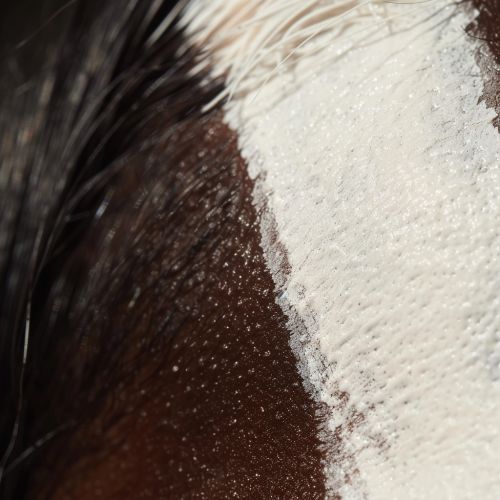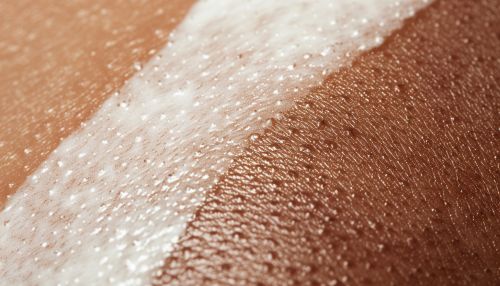Vitiligo
Overview
Vitiligo is a long-term skin condition characterized by patches of the skin losing their pigment. The patches of skin affected become white and usually have sharp margins. The hair from the skin may also become white. Inside the mouth and nose may also be involved. Typically both sides of the body are affected. Often the patches begin on areas of skin that are exposed to the sun. It is more noticeable in people with dark skin. Vitiligo may result in psychological stress and those affected may be stigmatized.
Causes
The cause of vitiligo is unknown, but most research points to the following occurrences as being significant: autoimmune association, neural, and autocytotoxic theories. It is also thought to be caused by genetic and environmental factors. Vitiligo is not contagious. People with vitiligo are at an increased risk of other autoimmune diseases such as thyroid disease, Addison's disease, and pernicious anemia.
Pathophysiology
Vitiligo is typically classified into two main categories: segmental and non-segmental vitiligo. In segmental vitiligo, the patches tend to be smaller and occur in one area of the body. In non-segmental vitiligo, the patches are larger and occur in different areas of the body. The exact pathophysiology of vitiligo is complex and not fully understood, but it involves the destruction of melanocytes, which are the cells that produce melanin, the pigment that gives skin its color.


Diagnosis
The diagnosis of vitiligo is typically made by clinical examination of a patient with progressive, acquired, white patches of skin. However, a skin biopsy may be used to confirm the diagnosis. In addition, the use of a special lamp known as a Wood's lamp may aid in the diagnosis.
Treatment
There is no known cure for vitiligo. For those with light skin, sunscreen and makeup are all that is typically recommended. Other treatment options may include steroid creams or phototherapy to darken the light patches. Alternatively, efforts to lighten the unaffected skin, such as with hydroquinone, may be tried. A number of surgical options are available for those who do not improve with other measures. Counseling to provide emotional support may also be useful.
Prognosis
The course of vitiligo varies and is unpredictable. Some people may have only a handful of white dots that develop no further, while others develop larger white patches that join together and affect larger areas of skin. There is no way to predict how much skin will be affected. In most cases, vitiligo does not affect a person's physical health; however, it can result in psychological stress and social stigma.
Epidemiology
Globally about 1% of people are affected by vitiligo. In some populations, it is as high as 2–3%. Males and females are equally affected. About half show the disorder before age 20 and most develop it before age 40. Vitiligo has been described since ancient times.
History
The ancient Egyptians were the first to record cases of vitiligo dating back to 1500 BC. The condition was also recognized in the ancient Indian medical text, the Atharva Veda, which dates back to 1400 BC. The Greek physician Hippocrates also described vitiligo in his works.
Society and Culture
Vitiligo is sometimes stigmatized in various societies and cultures. In some cultures, individuals with vitiligo, and even their family members, are shunned and excluded from arranged marriages. People with vitiligo may feel depressed because of the social stigma or because their appearance has changed dramatically.
Research Directions
Research is being conducted into the causes of vitiligo and its possible cure. Some of the research is focused on the genes involved in vitiligo. Some studies are looking at the effect of environmental factors. For example, it has been found that mechanical stress on the skin can cause the release of antigens that in turn trigger the autoimmune response in vitiligo. Other research is looking at treatments for vitiligo.
